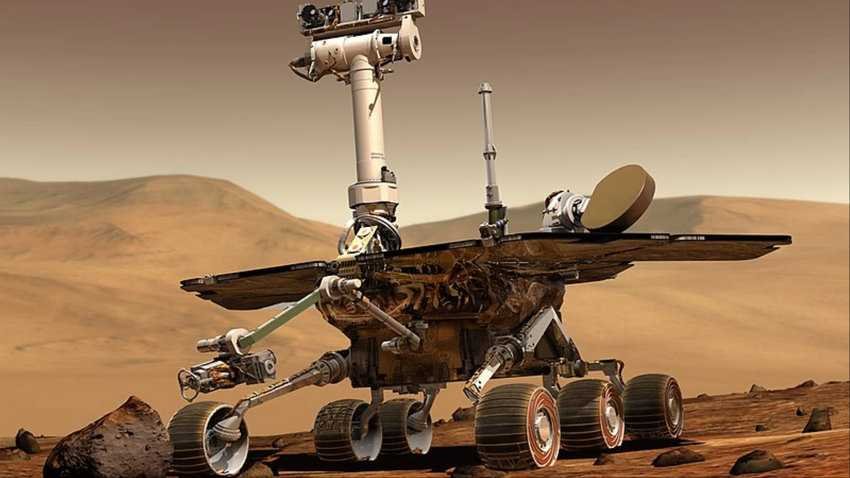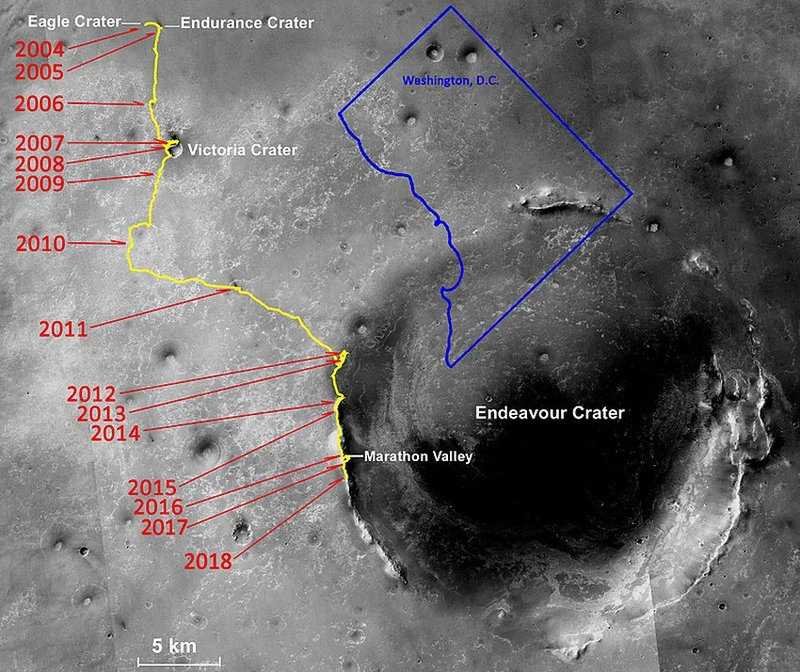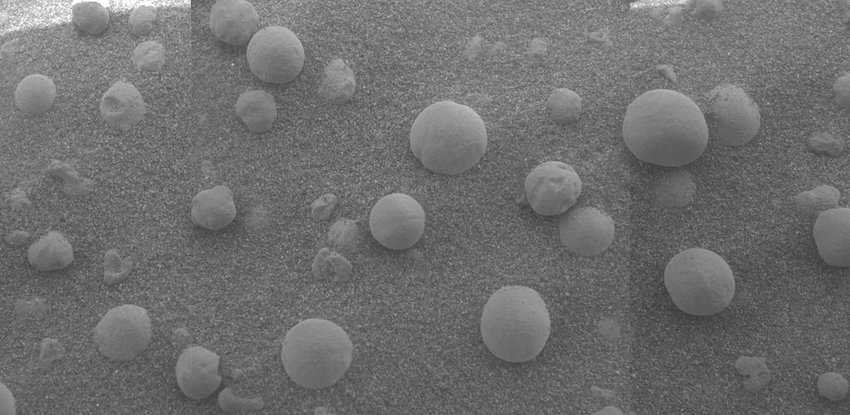The Rover robot Opportunity of NASA that has been on Mars since 2004, is officially dead, according to yesterday's announcement by the US space agency.

NASA lost contact with the Opportunity rover on June 10, 2018, after the rover was caught in a giant dust storm. Since then, mission managers at the Jet Propulsion Laboratory have made over 835 attempts to reestablish communication. The last call to the robot was sent late Tuesday night Pacific time. The Rover Opportunity, or Oppy, as it is jokingly called, did not respond.
And so Nasa announced on Wednesday 13 February at 14:00 ET and officially the end of the Opportunity mission, and therefore the MER mission.
At 15 years on Mars, Oppy drove 45,16 kilometers in the Meridiani Planum region near the equator, the longest distance of any land vehicle. (The Soviet Lunokhod 2 Moon rover is second with 38,6 km.) It is the only robot to "run" a marathon distance in another world.
Opportunity exceeded the 90-day planned duration of its mission 55 times, making it one of NASA's most resilient and productive interplanetary explorers.

Here you can see the full trip of Oppy, with the outline of Washington DC next, for size comparison
Oppy and its robot twin Spirit launched from Earth in July 2003 as part of the preletterNASA's Mars Exploration Rover (MER). Spirit was the first to reach Mars and landed in Mars' Gusev Crater on January 4, 2004. Opportunity touched down on the other side of the planet three weeks later on January 25.
The Spirit was immobilized by a sand trap in 2009, and the last contact with the rover took place on March 22, 2010. It was officially withdrawn in 2011.
Oppy spent his life on Mars, bringing important discoveries and shipping "Homemade" amazing images from his journey over plains and craters.
In 2005, rover discovered a basketball-sized meteorite. It was the first meteorite ever found on another planet, although two of these space rocks had been discovered on the moon.
Rover also encountered a variety of tiny spherical objects called Martian spheres, nicknamed "blueberries", created by multiple processes, such as volcanic eruptions, meteorite impacts and contact with water.

Opportunity experiments and observations also confirmed that plain of Meridiani Planum had water, billions of years ago, when Mars was in a liquid phase. This detail provided important information about a possible inhabitation of ancient Mars, which in turn leads to the possibility of extraterrestrial life elsewhere in the universe.
Eventually, it took one of the strongest dust storms ever observed on Mars, a storm that surrounds the entire planet, to stop the Rover on its orbits. The last resting place is on the edge of the Perseverance Valley, and is covered in dust.





